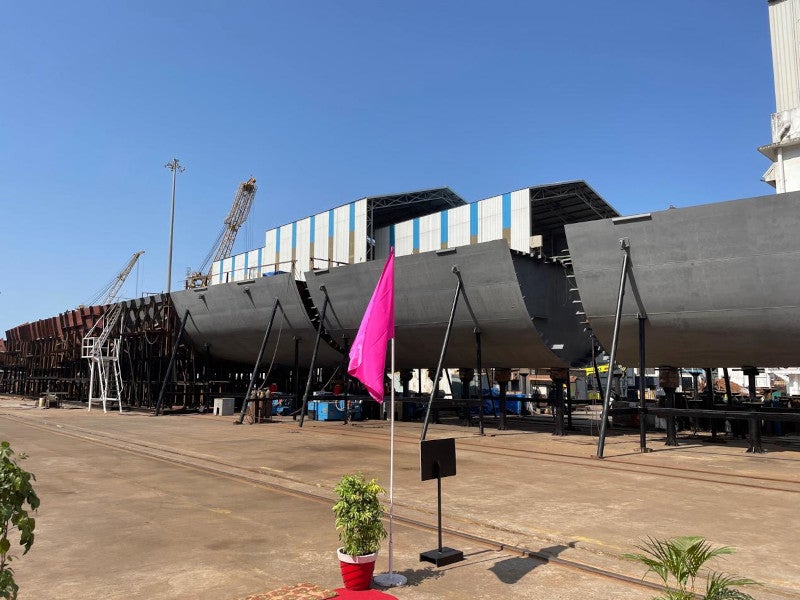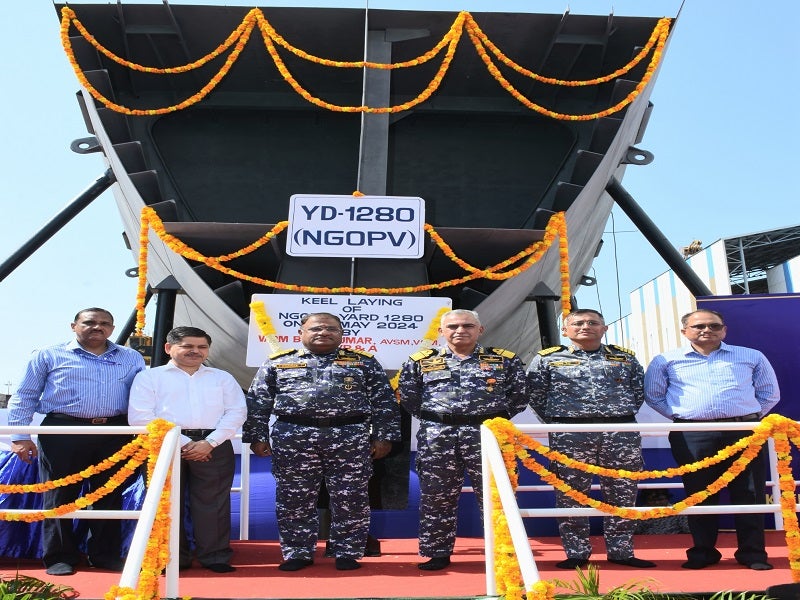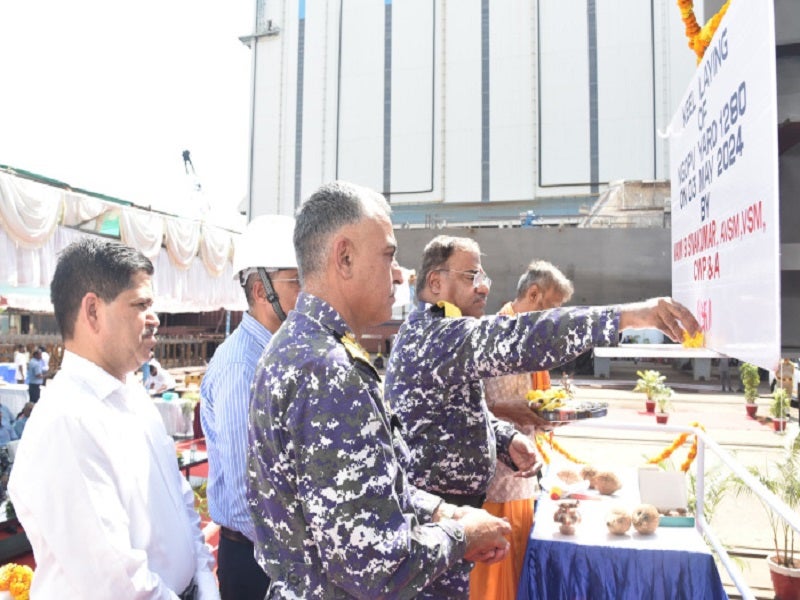The next-generation offshore patrol vessels (NGOPVs) are designed for the Indian Navy to bolster maritime security in both deep waters and coastal areas.
In March 2023, the Indian Ministry of Defence (MoD) finalised contracts worth Rs97.81bn ($1.18bn) with shipbuilding companies Goa Shipyard (GSL) and Garden Reach Shipbuilders and Engineers (GRSE) for the indigenous design and construction of 11 NGOPVs.
GSL, as the lead shipyard, will construct seven of these vessels, valued at Rs59.65bn ($725.02m).
GRSE will build the remaining four, with a contract value of Rs35bn.
The keel-laying ceremony for the first NGOPV took place at GSL’s shipyard in May 2024.
Ship deliveries will commence in September 2026.
The new vessels represent a crucial advancement in the Indian Navy’s initiative to locally manufacture ships, aligning with the Aatmanirbhar Bharat and Make in India programmes.
Next-generation offshore patrol vessel design and features
The NGOPVs will measure approximately 110m in length, with a draught of less than 5m. Their hull form is designed to minimise resistance and enhance sea-keeping performance.
The vessels will have a maximum speed of not less than 25kt, a maximum sustained speed of not less than 20kt and an economical speed of not less than 14kt.
The NGOPVs will have a displacement of 2,900t and a range of not less than 8,500nm at 14kt.
The vessels can operate at sea for up to 60 days and can accommodate around 20 officers, including four female officers, and 130 sailors. They are designed for a minimum service life of 30 years.
Combatant features of next-generation offshore patrol vessel
The NGOPVs are designed with advanced naval combatant vessel features and will enhance the Indian Navy’s ability to maintain combat readiness, safeguarding the economic and geopolitical interests of the nation in the Indian Ocean.
The vessels will help protect offshore assets, conduct maritime interception operations (MIO), perform visit, board, search, and seizure (VBSS) operations, carry out presence-cum-surveillance missions, conduct exclusive economic zone patrols, engage in mine warfare operations, and undertake anti-piracy missions.
The new ships can also perform roles including seaward defence, out-of-area contingency operations, non-combatant evacuation operations, convoy operations and counter-infiltration operations. They can also support special and helicopter operations.
In addition, the NGOPVs are suitable for anti-poaching and anti-trafficking efforts, humanitarian assistance and disaster relief, serving as hospital ships, providing fleet maintenance support, and functioning as communication intelligence ships.
NGOPV control and operations
The NGOPVs will be equipped with advanced systems to enhance their control and operational capabilities. These include the integrated platform management system, an automatic power management system,an emergency diesel alternator, a cold room/blast chillers, two sewage treatment systems and four high-power water guns.
The vessels will feature low-noise propellers and machinery, efficient mufflers, and damping mountings to ensure smooth and quiet operations.
Communication and navigation systems
The NGOPVs will be equipped with state-of-the-art communication and navigation systems to support their missions including an advanced composite communication suite, integrated bridge system, Inmarsat terminals and satellite communications equipment.
Avionics and auxiliary systems
The vessels will have aviation facilities, enabling day and night helicopter and remote-piloted aircraft operations. The deck will have a strength suitable for helicopters with a gross weight of 15t (AUW).
Other features include a rail-less traversing system, night vision goggles compatible lighting and landing aid suite, maintenance and technical facilities for helicopters and RPAs [remotely piloted aircraft], and refuelling facilities.
The vessels will be equipped with auxiliary systems such as air conditioning, refrigeration, ventilation, fire main, salvage, ballast, oily water separator (OWS), and other relevant systems to support operational requirements.
Propulsion
The NGOPVs will be powered by two diesel engines, controllable pitch propellers with twin rudders, and bow thrusters for enhanced manoeuvrability.
Weaponry systems
The vessels will be equipped with a sophisticated electronic warfare (EW) suite capable of detecting emitters in the frequency range between 0.175GHz to 40GHz.
The EW suite will include a combat management system, chaff fire control system, radar, gyro and global positioning system.
The vessels will also feature a super rapid gun mount integrated with Lynx U2, two AK 630 mounts integrated with Lynx U2, an electro-optical infrared search and track system for primary surveillance and tracking, and a fire-control system to control the guns from the bridge.
Contractors involved
In December 2023, Bharat Electronics Limited, a government-owned aerospace and defence electronics company, secured orders valued at Rs26.73bn ($321.12m) to supply 14 different types of sensors to be installed on the NGOPVs.
GSL ordered sensors worth Rs17.01bn ($204.35m), while GRSE placed orders for sensors valued at Rs9.72bn ($116.77m).
The Indian Register of Shipping (IRS) is providing classification services for NGOPVs being built by GSL. Skilled IRS teams will conduct validation, technical analysis and stealth studies to ensure the vessels meet the required standards.






